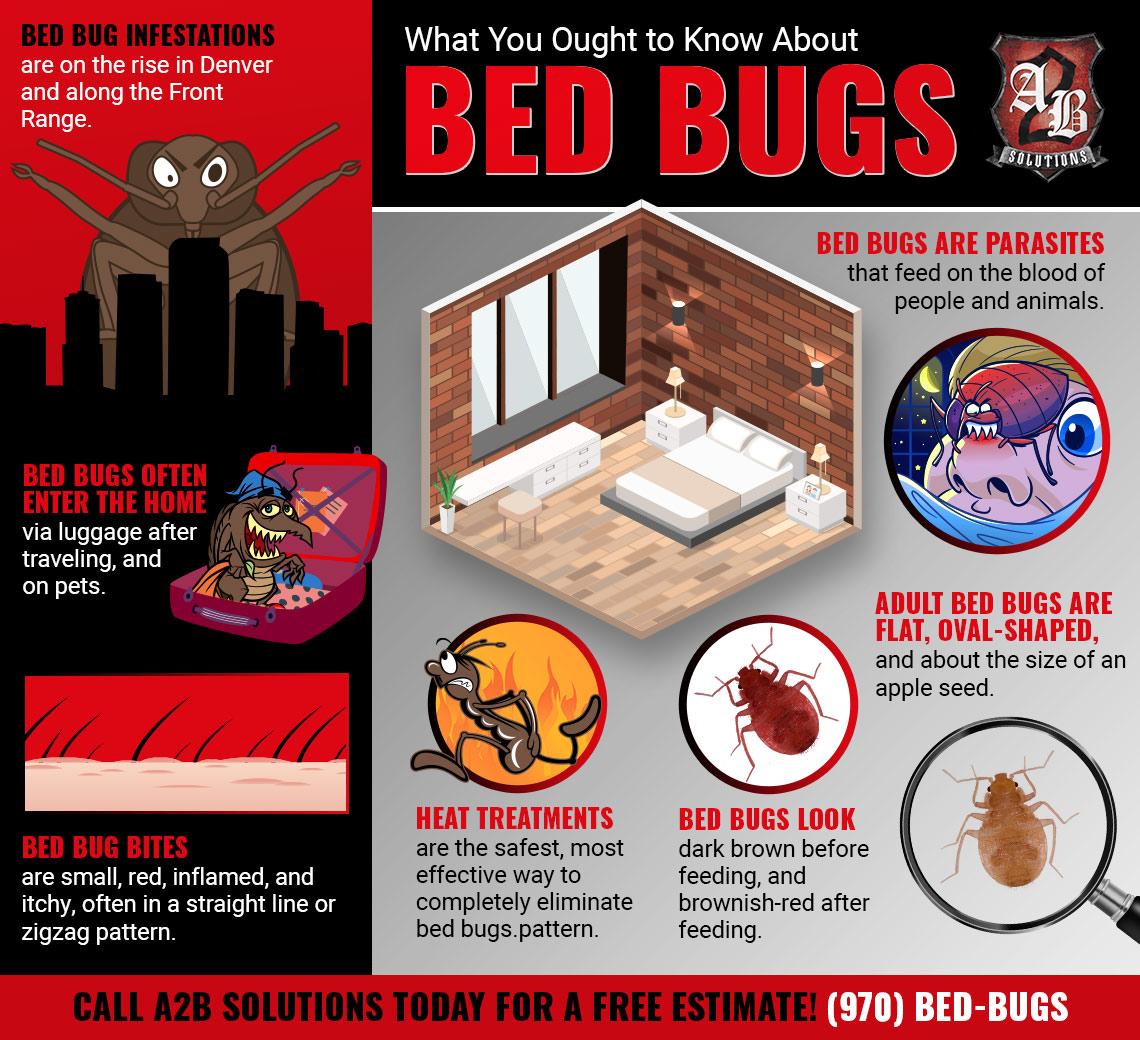Many companies heat to only 130 degrees ambient. We make sure it is 130 degrees inside of your walls. Our typical heat treatment takes anywhere from 8 to 12 hours. Many heat treatment companies only heat for 5 to 6 hours which doesn’t get the job done. Find out the length of time a company heats before choosing a heat treatment company to perform your job. Know that at A2B Solutions Inc. we take the time necessary to perform the job right the first time.
We take temperature readings every 15 and record them every 30 minutes and send you a copy of these results after your treatment is completed. Many competitors use only a handheld temperature gun to record the ambient temperatures of the room. We are constantly monitoring various rooms all throughout your home at the same time with our state of the art wireless monitoring system. Many of our bed bug heat treatment sensors are placed deep within your walls and in other hard to reach places where bed bugs like to hide. We only use the handheld temperature guns to check places like the inside of your drawer, not for the overall home.
Yes! We have diligent, attentive bed bug heat treatment technicians who take pride in how they perform their job. They never leave your home unattended and are on site throughout your entire heat treatment. They are going inside your home every 30 to 45 minutes to move items around, redirect airflow as needed to ensure that every nook and cranny of your home reaches the temperatures needed for 100% bed bug eradication. Unfortunately if one bed bug is left alive then the job is not complete.
Yes. A2B Solutions does a drug screen and full criminal background checks on each employee before hiring. These employees are inside your home so this is very important to us that we hire the right type of individuals. We background check and drug test all our employees to provide you with peace of mind. All our employees arrive in uniform and conduct themselves as the true professionals they are. Our employees also truly care and it is their mission to completely eradicate bed bugs from your life.
Absolutely! A2B Solutions strictly adheres to all of the state and local requirements for operating a business in Colorado. Our company is fully insured, bonded, and hold all the necessary licenses required for operating our bed bug heat treatment business. Many companies that perform bed bug heat treatments are not and are simply a single person or some of their friends that have purchased a heater and attempt to eradicate your bed bug issue but they are not insured or bonded. PLEASE do your research and make sure that if you use another company they are insured and bonded like A2B Solutions Inc. is!
It’s unlikely that a bed bug would travel on you or the clothes you are wearing. You move around to much to be a good hiding place. This is not to say that a bed bug has never hitchhiked in this manner. Bed bugs are more likely though to be spread vis luggage, backpacks, briefcases, mattresses, and used furniture. They are hitchhikers!
Adult bed bugs are oval, wingless, and rusty-red in color, with flat bodies, antennae, and small eyes. They are visible to the naked eye, but often hide in cracks and crevices. When bed bugs feed, their bodies swell and become a brighter red. Newborn bed bugs (Nymphs) look like mini versions of adult bed bugs, but they are extremely light in color—translucent. Like the eggs, they start out very tiny (approximately 1 mm), and grow to about 5 mm (1/4 inch) as adults. The blood is clearly visible in a nymph that has just fed.
There are many myths about bed bugs. Some of the common misconceptions are featured in our “DEBUGGING BED BUG MYTHS” on this page below.

Bed Bugs are a parasitic insect. They feed exclusively on blood. Cimex lectularius, the common bed bug, is best known as it prefers to feed on human blood. Bed bugs are small, oval and brown in color. They have flat bodies but after a blood feeding their bodies swell and turn a reddish color. They are active at night and generally hide during the day. Bed bugs do not fly but they do move very quickly over surfaces such as the floor, wall, or ceiling.
A female bed bug can lay up to 500 eggs in her lifetime. They are quick and efficient at reproduction. The eggs are about the size of a speck of dust. Eggs hatch in 6-10 days and their nymphs emerge promptly seeking their first blood meal. Infestations will grow quickly as they can start simply by one pregnant female. Bed bugs pierce human skin with their elongated beaks to extract blood for their meal. Bed bug bites occur on exposed skin. Bed bug symptoms vary between individuals; some people show no signs of being bitten while others have small inflamed areas, and in others swelling, itching, and even a bed bug rash are common.
Bed bugs are not known to transmit or spread disease. The Environmental Protection Agency (EPA) and the Center for Disease Control and Prevention (CDC) consider bed bugs a public health pest but have verified that they are not known to transmit or spread disease. Once, it seemed that the bed bugs had been eradicated in this country by the 1950’s due to widespread use of the chemical DDT. This is certainly not the case currently. One contributing factors to their resurgence include increased foreign travel by United States citizens as well as a rise in immigration from developing countries. Bed bugs are back with a vengeance in the 21st century. Bed bug experts in government agencies have stated that the growing problem of bed bugs in the United States is due in part to increased resistance of bed bugs to pesticides. Scientists recognize and admire the evolutionary ability of these insects to rapidly overcome the attempts to control them. Bed bugs have a short reproduction time thus quickly enabling their genetic ability to evolve resistance to pesticides. Many scientists have stated that bed bugs in the very near future will not be controlled by chemical means at all. Fortunately there are superior alternatives to pesticides like exposing the bugs to high heat effectively eradicate an infestation.
Bed bugs are insidious creatures. They can survive for up to a year without feeding. This ability lets them wait for a host or to hitchhike great lengths until they find a suitable new living space. Bed bugs spread through human contact, luggage, secondhand furniture, etc. Once a bed bug infestation occurs it causes both physical and psychological pain due to bites, sleepless nights and increased anxiety.









Some companies offer .75 cent or under per square foot treatment options. These companies do not give the same quaility care nor the time to eradicate bed bugs completely. We take our time and offer the longest heat treatments in the industry. Many companies heat to 130 degrees however we ensure that even inside of your walls (common place for bed bugs to hide) it has reached over 130 degrees. The longer and more thourough heat treatment ensures that our treatment kills every bed bug in all stages of life including eggs. Contact our office for more inforamation as we are always available to answer your question or to set up one of our FREE inspecftions.


Bed bugs lack wings, and therefore cannot fly. Bed bugs crawl about a meter a minute.
Compared to other insects, bed bugs are slow to reproduce; each adult female produces about one egg per day, whereas a common house fly lays 500 eggs over three to four days. Each bed bug egg takes 10 days to hatch and five to six weeks for the offspring to develop into an adult.
Scientists debate this point, but evidence suggests that at normal room temperature, bed bugs can only survive two to three months without a blood meal. Yet, because they are cold-blooded, their metabolism will slow down in chillier climates, and the insects may live up to a year without feeding.
Although bed bugs are generally nocturnal, they’re like humans–if they’re hungry, they’ll get up and get something to eat. If you have a bed bug infestation and you go away to visit a friend for a week, you come back and sit down on the couch, even though it’s daytime, the bed bugs will come looking for you. Unfortunately, keeping a light on does not keep these tiny vampires away. One of the most common bed bugs signs is a bed bug bite telling you you’ve been bitten.
“Bed bugs” is such a misnomer, as they do not only live in beds; bed bugs spread away from beds into living areas and can be seen on any surface, including upholstered furniture, couches, chairs, railings, ceilings, walls, carpet, rugs, and more. Bed bugs especially love wood and cardboard. Quite frequently, our bed bug removal experts find the bed bugs inside of your walls.
Bed bugs are nondiscriminatory and can be found anywhere from ritzy high-rises to homeless shelters. Therefore, the prevalence of bed bug infestations in low-income housing is not a result of the insect’s preference, but rather that of dense populations—any location is vulnerable to experiencing a bed bug infestation. Bed bugs are not attracted to dirt and grime; they are drawn to warmth, blood, and carbon dioxide. However, clutter offers bed bugs more hiding spots. Human beings are their food source, so where we are, they are!
Bed bugs do not cling to hair and skin, like lice or ticks, and do not prefer to remain in our clothes. Because bed bugs love dark, tight spaces, they are more likely to travel in backpacks, luggage, shoes, and other items.
Bed bug bites can lead to anxiety, sleeplessness, and even secondary infections like bed bug rash, but there have been no reported cases of bed bugs transmitting diseases to humans. However, they do harbor human pathogens. At least 27 viruses, bacteria, protozoa, and more have been found in bed bugs, although these microbes do not reproduce or multiply within the insects.
When the controversial pesticide DDT (Dichlorodiphenyltrichloroethane) was banned in 1972, most bed bugs were already resistant to it. Today’s bed bug populations are even more widely resistant thanks to the use of a new class of pesticides. Pyrethroids, the main class of pesticides used against bed bugs today, targets sodium channels in bed bug cells, just like DDT. Consequently, as bed bugs develop resistance to pyrethroids, they also become cross-resistant to DDT. Chemicals just do not work when you are trying to fully eradicate a bed bug infestation! Rather, bed bug heat treatments eliminate bed bugs completely, and is safe for humans and the environment.
Thanks to pesticide resistance, those cans of spray at your local hardware store simply will not do for bed bug removal. Relying strictly on chemicals is generally not a good situation; instead, the most effective bed bug treatment uses heat. Contact A2B Solutions, in Denver, Fort Collins, and Greeley, Colorado, and Cheyenne, Wyoming, for a safe and effective bed bug heat treatment.



©2021 A2B Solutions – All rights reserved
Privacy policy
Terms & conditions